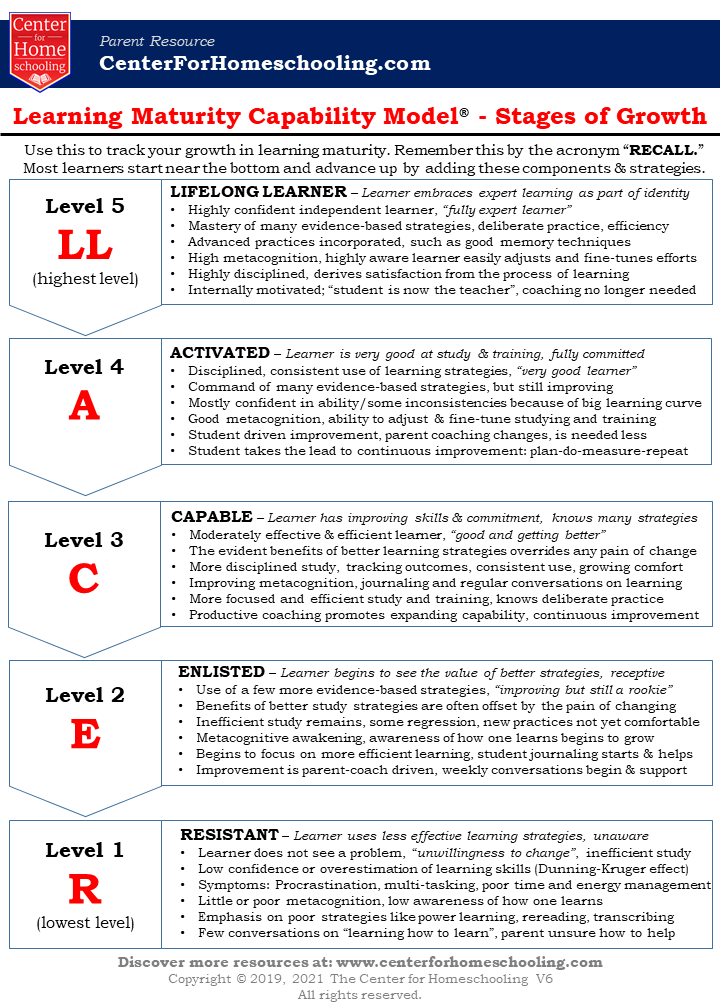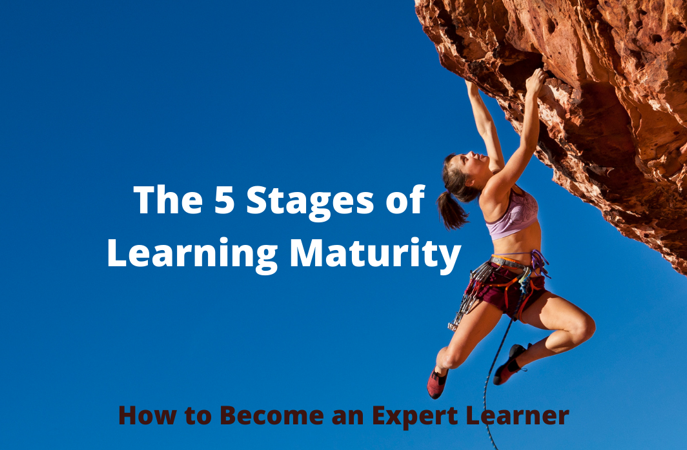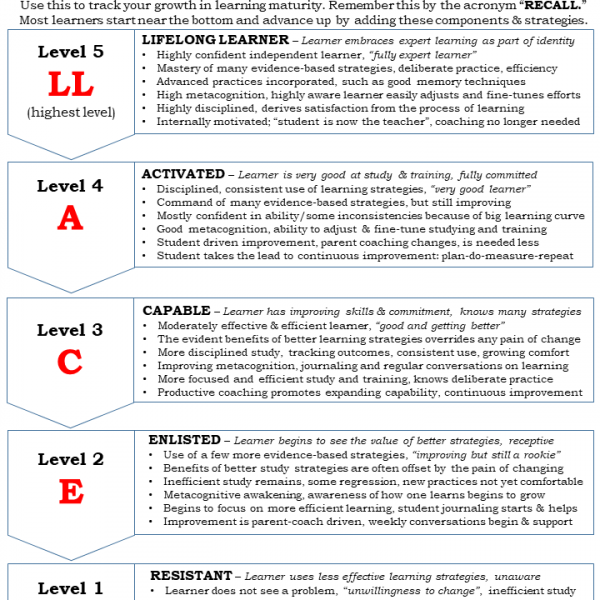
Do You Know Your Child’s Learning Maturity? Find Out Now

Reading time: 8 minutes
Did you know that kids go through 5 levels of learning capability? Learn how you can grow your child’s learning maturity. First, discover which maturity stage your child is at right now, then help your child become a more powerful learner in easy steps!
You can get the free taxonomy that describes all 5 stages. Just click here.
As homeschoolers, it’s important to identify how one child is a more mature learner than the next. Because this knowledge allows you to adjust your teaching and coaching to fit each child, which means you can grow a more complete and highly confident learner.
Why are Some Kid’s Better at Learning?
Why is one child a far more capable learner than another? Numerous studies reveal kids are not born with some magical talent at learning, and these also reveal that a difference in learning capability is mostly not explained by a higher intelligence.

Students with higher learning maturity have better-developed skills and use better methods. The strategies they use to learn are more effective and allow them to learn faster. Learning maturity doesn’t rely on applying more effort but using strategies validated by science. The head start in life that more mature learners have is available to every child.
How can You Accelerate a Child’s Maturation as a Learner?
You grow a more mature learner by obtaining a better understanding of the science of how people learn, then you share this knowledge with your child by encouraging better practices and methods. Most promising, when you do this, you can rapidly improve a child’s learning maturity through a logical progression of actions to grow it.
This is where the five stages simplify the path to greater learning maturity. Get the easy-to-understand graphic of the 5 stages by clicking here.
The Learning Maturity Stages of Growth is simple to use and very powerful.
When you expand your child’s learning capabilities, you automatically advance upward on a continuum of learning maturity. The learner (regardless of age) progresses from low and ineffective to high and lifelong learning by practicing and using the skills and attributes of highly effective learners.
Without an understanding of these stages, we are confined to narrow discussions that use vague language about a student’s learning capabilities – For example, you might hear comments like this, “My oldest is a good learner”, or “My youngest struggles at learning math.”
While these descriptions are frequently used, they aren’t particularly helpful in guiding improvement – because they aren’t very specific. They don’t describe why or what is missing. When it comes to learning improvement, if you can’t accurately describe a situation, you will struggle to improve it.
The discussion of learning maturity with a clear model that breaks this down into components will give you a more nuanced way of understanding the important lifelong skill of knowing how to learn.
Improving something when you have a step-by-step path makes it easier to get better at anything.
Seven Changes to Maturity
To better understand this, let’s begin by defining what maturity means and how it functions.
Perhaps the most well-known maturity theory is the one presented by Chris Argyris in Personality and Organization. He endeavors to explain human nature and behavior.
According to this theory, a persons’ development is processed along a continuous break from an immaturity situation on one end to a maturity situation on the other, a continuum describing various levels of maturity.
A mature person is characterized as being active, independent, self-confident, and self-controlled. On the contrary, an immature person is passive, dependent, has a lack of confidence, and feels the need for control by others. That’s a useful summary to keep in mind.
According to Argyris, seven changes should take place in the personality of individuals if they are to develop into mature people over the years. The seven changes are:
- Individuals move from a passive state as infants to a state of increased activity as adults
- Individuals develop from a state of dependency upon others as infants to a state of relative independence as adults
- Individuals behave in only a few ways as infants, but as adults, they are capable of behaving in many ways
- Individuals have erratic, casual, and shallow interests as infants but develop deeper and stronger interests as adults
- The time perspective of children is short, involving only the present, but as they mature, their time perspective increases to include past and future
- Individuals as infants are subordinate to everyone, but they move to equal or superior positions with others as adults
- As children, individuals lack awareness of a “self”, but as adults not only they are aware of, but they can control “self”
In Argyris’s opinion, these changes reside on a continuum of gradual change, and that the “healthy” personality develops from “immaturity” to “maturity”. These changes are only general tendencies, but they do give some light on the matter of maturity.
All of these apply to growing a mature learner. Knowing the above, we can distill this into a simple overall definition.
| Maturity is defined as the state of being fully developed. |
Isn’t this what you are trying to do as a homeschooling parent? Fully developed goes beyond subject matter expertise, it must include the highly important life skills of knowing how to learn even hard things.
Why We Talk About Maturity
Understanding maturity is useful because it guides how we develop something – in this case, how to improve our kids’ vast and often untapped learning capabilities. It resides in common with many other important types of maturation.
In child development we already consider many maturities:
- Mental
- Physical
- Emotional
- Social
- Intellectual
- and Ethical/Moral maturities.
These are all taxonomies that help us because they provide a simple way to understand how something important operates and changes. The best models help us assess where we are and give us a roadmap of how to move forward.
For maturity to be useful, the conditions of full maturity must be well-defined for you – because you need to know the goal, and what the end state you are aspiring to get to will look like.
Once you know this there are many practical benefits; we can use it not only to assess where we are, we can identify the next steps to take and how far we have to go, we can establish higher expectations for personal growth, and we can even use the taxonomy’s terminology in conversations with our kids about how to get better or be more complete.
Is This Complicated? Not Really
Do taxonomies and maturity continuums seem complicated? They don’t have to be.
Of course, to use any maturity model to help you, first, you have to learn it and its vocabulary. But that’s not hard. You already know plenty of them. For example, here’s one everyone knows:
 See, it’s easy to understand a taxonomy and with this one, we use it to track the overall growth of our kids. This shows that a model that explains how maturity progresses doesn’t need to be overly dense or crazy hard to be useful.
See, it’s easy to understand a taxonomy and with this one, we use it to track the overall growth of our kids. This shows that a model that explains how maturity progresses doesn’t need to be overly dense or crazy hard to be useful.
For example, imagine you were someone who didn’t know this model because you just flew in from Mars – you would have difficulty determining if your child’s growth was on track. It would be hard to talk about it. You would have no steps to organize your thinking about development. You might even suffer a lack of confidence because the goal seems so far removed.
You see, a growth model can be very helpful once you know it.
The key is having the right maturity model. It has to fit the situation. You wouldn’t use the above development model to look at learning. It doesn’t help you with that because we don’t know what an adolescent learner should look like.
When we get the right model for the challenge we face, it provides us with a clear path that helps us feel a solid sense of progress as we advance through the stages. That’s why you need the Learning Maturity Model to understand how to chart your progress with the challenge of growing the skills of learning how to learn.
Hopefully you now better understand the benefits of taxonomies and dynamic models and why we need to know them.
Take-Aways about Develop Your Kids’ Learning Maturity
These are your key ideas from this article.
- Learning maturity can be improved by knowing and using better study strategies and methods.
- There are 5 stages to learning maturity. Most kids start near the bottom.
- The good news is that it is not complicated to move your kids to higher levels of learning maturity following a defined path.
- Maturity according to Argyris, is being active, independent, self-confident, and self-controlled. 7 changes take place as one moves on a continuum from immature to mature.
- A taxonomy is a type of model that describes how something progresses or changes. These are helpful because they provide a way to understand how something operates.
- In child development, there are many types of maturity we need to know. Learning maturity is one of them.
- Learn the 5-step model, acquire some additional know-how, then apply a few good tools to make improve learning power.
The 5-stage roadmap for growing learning maturity is covered in greater detail in our online course Improving Your Child’s Learning Power. Learn more by clicking here.
Please give some of your deep thought time to thinking about the learning maturity capability model. It’s the key to better and faster learning!






